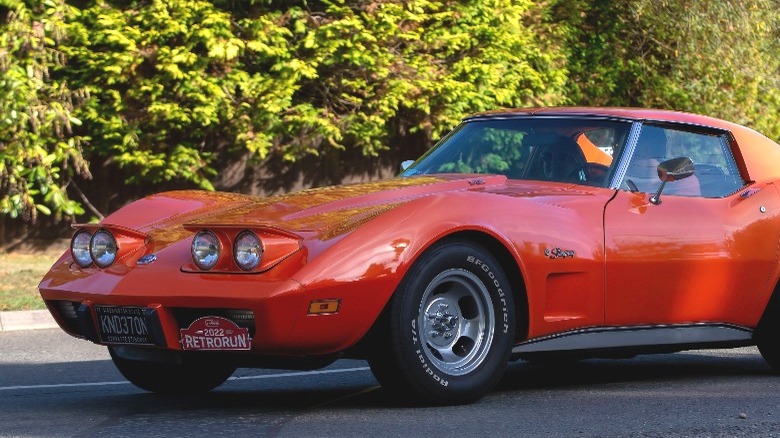Here's Why New Cars Don't Have Pop-Up Headlights
Once upon a time, pop-up headlights were all the rage in the automotive design space. They were used by every manufacturer from Ferrari to Chevrolet and anything in-between. Their popularity as a design trend was not beloved by all, but the flexibility of a pop-up headlight makes it easy to see why manufacturers used them. By the early 2000s, however, we saw the end of the this headlight trend, and the reason it died out has a lot to do with regulations, even though no specific law banned the use of pop-ups.
The U.S. has a sordid history when it comes to vehicle legislation, particularly when it comes to vehicle lighting equipment. Often, safety standards in the U.S. have been unable to keep up with technological changes, but laws around consumer safety and motor vehicles in the European Union have a much better reputation in this regard. As a result, regulations are partially to blame for the disappearance of pop-up headlights, but not because the laws outright made them illegal, contrary to popular belief. As it turns out, pop-up headlights were collateral damage rather than the focus of any one piece of legislation.
Pop-up headlights were too sharp for the E.U.
Pop-up headlights gave manufacturers a lot of flexibility when it came to the facade of a vehicle, because the headlights didn't impact the way the vehicle looked. With pop-up headlights, designers could easily achieve the clean sporty lines of a Ferrari F40 or the exotic looks of the Lamborghini Miura without having to account for the large reflectors required by pre-LED technology. Pedestrian safety laws introduced in the E.U., however, spelled doom for discreet lighting because pop-up headlights were just too sharp.
The United Nations Economic Commission for Europe's 1998 Global Technical Regulation Number 9 deals with pedestrian safety sets out how countries should test the pedestrian safety of vehicle exteriors. The U.K.'s Individual Vehicle Approval framework, which is based on the aforementioned Global Technical Regulation, limits the size and presence of sharp edges on any surface where a pedestrian or cyclist is likely to impact in the event of a collision. According to the U.K. regulation, protrusions greater than 5 mm (0.195 inches) must have a radius of at least 2.5 mm (0.098 inches), and further rules prohibit protrusions on which pedestrians could get caught in the event on an impact. These and other regional E.U. laws made it prohibitively difficult to engineer pop-up headlights into a vehicle.
Manufacturers and designers trying to meet E.U. regulations would change their vehicle designs, and because pop-up headlights were a fairly large aesthetic and engineering change, the pop-up headlights eventually got the cut globally.

